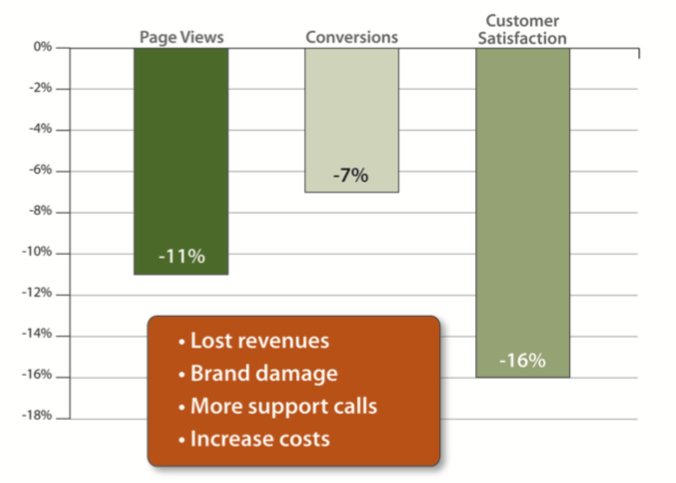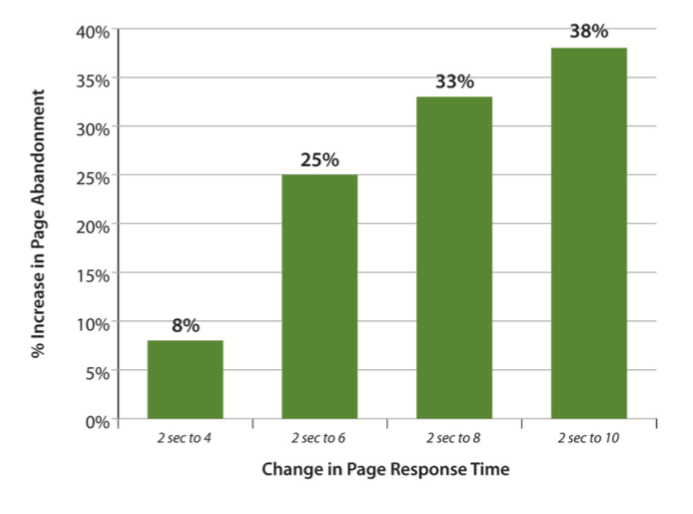Maintaining your Drupal web property could double or triple your potential market value.
90 percent of operations are no less important, but aspects of security, maintenance, and the backend Drupal essentials shouldn’t be less taken care of.
The Necessary: A Maintenance Plan
Nearly a decade ago, you could build a static website, publish content, display pictures and satisfactorily leave it unattended for the entire year.
In a riskier scenario like today’s, you can’t take the lineup of features and functionalities for granted, even throughout your business hours. Your organization’s reputation, market-dominance, and operations are at stake round the clock.
Time management is key when it comes to running a business. With so many tasks requiring completion, you may not have enough hours to apportion your tech-team to monitoring your online presence on a daily basis.
What is a Drupal maintenance plan?
A Drupal maintenance plan is a support and maintenance strategy, solely dependent on requirements. Depending on your Drupal website functionalities, version, and website scale, support and maintenance initiatives can be custom-curated.
However, there are various industry-standard maintenance models which cater to a wide variety of businesses, provided by almost every agency.
What comes under a maintenance plan?
While there can be a ton of aspects a maintenance model covers, we will get a glimpse:

- Security updates
- Version update
- Third party integration support
- Regression testing
- Bug resolution
- Hosting infrastructure maintenance
- 360-degree monitoring and abnormality alerts.
- Emergency support
- Minor feature improvements
The activities undertaken by agencies in a support and maintenance agreement differ from business to business. For an instance, in case your business operates at an intermediate level, a standard plan would cover you for only 5 business hours, which is fair enough for the time being.
Likewise, when operating at the enterprise level, you might have several websites with similar functionalities across all of them. In such a case, an enterprise bound maintenance plan would suit your needs which would include things like regular checks for malware and outdated functionalities, 24*7 support, immediate security upgrades and bug detection-cum-resolution.
How do some organisations do it?
Some organisations still take the in-house road.They allocate maintenance hours to their already crowded business agenda.
Not a fair move until you are not financially equipped.
One senior site designer has hours apportioned to check for malware, bug fixes and push the available upgrades on time. Which, by far, is a fine practice when your market is restricted to a specific region or you host a limited number of people per month/quarter.
The right way
As Michelle Colon-Johnson, founder of book publicity company 2 Dream Productions said, and I quote - "One of the most important tasks that I suggest that a small business owner [or] startup outsources is the updating of their websites."
There is a more than a mere probability of new applications not fitting in right with the template you have in place. The need for frequent backups to prevent data loss or setting up the upgraded version of the website might consume delicate business hours, honestly.
Being a newbie to the market, one should avail agency support, look for the right maintenance model and I am sure it is going to be the most economical approach to website maintenance.
“Let them support and maintain who specialise in the business”
How rewarding is it for business growth?
Assured User Satisfaction
You host your potential customers(visitors) and are probably familiar with the buyer journey theory. Web imperfections such as - glitches, lags, disabled call-to-actions, and malfunctioned pop-ups can drive users away.
While having an agency supporting your Drupal website round the clock can ensure visitors don’t experience flaws. This kind of all-around aftercare doesn’t compromise your reputation in the eyes of unique or returning visitors.
Aberdeen Group found that a one-second delay in Web page response time decreased conversions by 7%.

Un-compromised Security
An increase, your user base increases your database. Acquisition of sensitive customer information by an intruder should not even be a worst-case scenario. The Drupal community keeps providing security updates and patches (if any), quite frequently. Sometimes these updates are ignored by in-house technicians, may be due to a scarcity of time.
Going for a Drupal support and maintenance plan can hold the agency extremely strict towards keeping the software updated while also identifying and resolving loopholes which might prove to be super-destructive.
In the enterprise level Drupal maintenance plan, you are provided with skilled developers/technicians who continually monitor and hunt for potential loopholes every minute.
Drupal has come this far due to its tier-1 security.
Prevent - out of the blue functionality failures
Payment gateway crashes, button disabilities, content updating issues, unactionable contact forms are just the tip of the iceberg. You may certainly have much more on your website, depending on the business you are in.
The agency’s service level agreement is customizable as per needs be, emergency support is for damage control as there isn’t the need to explain how fruitful can these failures prove to be for your business.
Speed has the lion’s share
Supposedly, you run a very swift website but speed is dependent on a lot of backend factors which undergo fluctuations too frequently. 4 seconds is the ideal time a visitor would wait for the homepage to load. Metrics which affect the speed index of a page are - Time to first render, Time to first response, and total load time.
A similar report by Gomez’ reveals the lack of visitor patience and loyalty. By analyzing page abandonment data across more than 150 websites and 150 million page views, Gomez found that an increase in page response time from 2 to 10 seconds increased page abandonment rates by 38%.
Aren’t you losing so much of in-flowing business?

Here is some ‘lead’ math
You sure want to be flooded with leads and convert them later in the chapter. Here is an appropriate measure of how much you may be missing due to poor web maintenance:
The value of a lead:
Let’s assume you provide business modeling services across the United States and charge $5000 on an average. Here, the value of a lead counts to $5000, the same being for the conversion.
However, not every lead you acquire will end up in your favor, and supposedly, 2 out of 8 leads will flow down the funnel. Meaning, your conversion rate will nearly touch 25% (2/8*100).
Clearing the air, you are generating $10,000 out of 8 leads. Leaving the value of one lead near to $1250. Now, some leads may be more qualified and values shall fluctuate accordingly.
Taking into account that you are a startup or a mid-market organization, with an average traffic of 10,000 per month, which takes us to a prospect visit rate of 333 a day (10,000/30). With a conversion rate of 25%, you close 83 leads/prospects which brings you $103,750.
Your website’s unexpected downtime and performance abnormalities may drive more than half of the visitors away, ultimately bringing down your conversion rate and goal revenue.
Here’s the fun part, the potential cash inflow of $103,750 is being restricted which can be turned into actuality or even doubled if you decide to outsource your Drupal support and maintenance responsibility at an ideal charge of nearly $170 an hour (pricing and requirements may vary).
Numbers are always the best driving factor.
The right plan for you as per your business stage
Website scale
Website activity is a measure of the crowd (traffic) experienced by the website. Under this, several metrics which are taken into consideration are- Page impressions, visitors, and their usual behavior, etc. Let’s break it down
Quiet website
When page impressions range from 0 - 10,000 a month, the website is below-averagely trafficked. You shouldn’t be requiring more than 3 skilled personnel to look after sudden abnormalities and upgrades. A basic support and maintenance plan would definitely meet your possible requirements, as it would include:
- Timely Drupal core updates
- Frequent backups
- Contrib module updates, security only
- Backup verification
- Smoke testing: Home and internal pages load, user login, and basic functionality checks.
- Web pages basic work: Basic code changes, content modification, and addition
Regardless of having a small visitor base, you might also want to conduct an overall performance audit to ascertain the errors. While a thorough check might burn a hole in your pocket, you should try building a long-term relationship with the agency of your choice, that will be relaxing in the longer run.
Intermediate level
When the impressions range from 10,000 - 1,000,000 a month, you would want to dedicate a five-member team to monitor everything, at least during the behavioral traffic-spike hours as per analytic data.
Traffic set aside, there might be enormous man-hours of content, maybe video, pdf, customer data, images, published content, and quite a cloud of functionalities. At such a sensitive business stage, one is suggested to seek more than the basic support model.
An ideal support and maintenance agreement shall be inclusive of:
- A periodic performance testing plan
- Round the clock security audits
- Backup integrity checks
- Module and security updates
- Flexible support hours
- Emergency support
- Backup verification
- Web pages intermediate work: Any request for a code change to website or page/site revisions.
Busy/Enterprise level
With 1,000,000+ a month page impressions and thousands of hours of content spread across numerous websites with complex custom code and many third party integrations, a master support agreement is a must. You might want to outsource a dedicated team to continually back the website, with all the above maintenance elements, plus:
- A comprehensive testing plan
- Emergency support
- Multiple server environment support
- Automated QA testing
- Multiple third-party integration support
- Regular alerts
- Monthly/Quarterly/Annual strategy meetings and improvements
Support and maintenance models in practice
The Bucket Model: Proactive approach
By this approach, the support and maintenance activities are targeted for a faster turnaround time of bug resolutions, specifically. A fixed number of hours are dedicated every quarter which have to be consumed within the respective quarter. Put forward simply, it is useful or loses it in the quarter.
Any sort of minor developments is proactively conducted within the unutilized timeframe. In case of exhaustion of available hours, stakeholder meetings can be held to decide the additional development hours.
The goldfish in here is a guaranteed turnaround time of 24 hours. Also, the issues are resolved within a 72-hour timeframe, the post being reported to the service vendor. Additionally, the dedicated team will monitor server logs and load, every 3 hours to check for abnormal behavior cross-website.
On-the-go model: The Reactive approach
In this model, hours can be utilized as per unforeseen need. The scope of work is estimated by the vendor for such time requirements and work only begins post stakeholder sanctions.
This model promises a guaranteed 36-hour response time and a usual bug resolution time of 1 to 5 days, which is totally dependent on the issue criticality/priority.
Generally, the following work is undertaken for these two support and maintenance models:
- Infrequent security upgrades
- Minor/random bug resolution
- Minor improvements on request
- Tweaking/amending Drupal views, blocks or rules
- Amending user roles/permissions
- Other site administration tasks as Drupal webmasters
Key components of a Support & Maintenance SLA
Disaster Recovery Plan
Earlier this month, a monkey caused a nationwide power outage in Kenya. Millions of homes and businesses were without electricity. Which just goes to show that “not all disasters come in the form of major storms with names and categories,” says Bob Davis, CMO, Atlantis Computing.
Disaster recovery has always been treated like an expensive policy but it is the best form of damage control in case of natural or artificial calamities. A support and maintenance plan comprising a DR plan would ensure minimal disruption to operations when it comes to visitor base and data.
If your website’s downtime will affect your business then the agency you choose to outsource to, must be ready with a jam-packed risk reduction plan.
These things might fail to operate in case of a disaster:
- Drupal and Modules
- Domain registrar
- Authoritative Name Servers (DNS)
- Database
- Uploaded files
- Web servers
You are reading the second necessary thing
What should a maintenance agency be backing up?
- Server configurations
- Website code, which includes Drupal, it’s modules, themes, or custom code if any.
- Files shall include images, videos or any other documents.
- The Database is the most crucial thing which is quite easy to backup, in comparison to other relevant backups. As your database goes to changes very frequently, it is necessary for the agency to back it up in a frequent manner, howsoever.
Also, every Drupal Disaster recovery plan should comprise backup at three independent levels- Server level, Application level, and at the content level.
The three basic features of a Disaster recovery plan are preventive, detective, corrective measures.
What can website downtime mean for you?
Economic imbalance: Your organization will suffer the loss of leads and future sales, might also mean restarting your business.
Branding or Reputation: Visitors, frequent visitors might notice the operational time or problems which have lasted a while, which may lead to brand image deterioration.
A-LA-CARTE Issues support
You might have a list of minor to-do or feature requirements. A-la-carte support is meant for tracking your random minor requests which consumed not many man-hours. Basically, one flat fee for on-the-go requirements --true simplicity.
This shall comprise the following:
- Online strategy consultation
- Perform a full file or database backup, upgrading plugins and theme, identification of on-the-spot performance issues and rectification
- Security-related diagnosis and re-infection prevention
- A ticketing system to request development environment work
- Migration to some another hosting service, Migration to Drupal, Upgradation to a major version of Drupal.
- Access/Direct communication with the Drupal development team.
While A-la-carte services are initiated as per vendor schedule, they can be pivoted to client’s schedule as per situation criticality.
Drupal Security Audits
Drupal support and maintenance agencies should not operate reactively, proactively instead when it comes to web security.
There has ought to be one expert Drupal best practitioner in the apportioned maintenance team, as it is important to identify what might go wrong. Drupal security audits channel various important decisions, such as server migration, site rebuilding, and Drupal reconfiguration.
Once attacked, it is obvious that your business would face upfront costs. Costs may vary as per website scale, but there is a huge chunk of loss which cannot be put into numbers.
You might want to avail the quarterly security audits if your Drupal website is categorized under quite/lite websites. A monthly security report is recommended for enterprise and intermediate level businesses.
On the application side, these elements should be incorporated into best practice:
- Modifications to core and contrib modules
- Code overview: Reviewing of custom code is an essential parameter, as custom codes are often not so well written and happen to be open to vulnerabilities due to lack of styling guidance, this usually is more prone to large-scale development projects where many developers work towards a common end-goal.
- Spam protection practice such as forms and captcha
- Frequent security reports which scan more malicious but common exploits
- Automated testing process in order to ensure all freshly incorporated Drupal modules comply with the security standards.
Most of the Drupal support agencies provide monthly security reviews on request at a flat fee. However, Drupal has been the least vulnerable content management system as per various reports since 2012, which doesn’t mean these core requirements should be held for later in your support and maintenance plan.
What makes sense?
Bring the business-related activities and initiatives to your attention. Having an agency to handle it all is the best call, by far. For any further assistance related to support models, we can curate one specific to your needs. With more than 35 skilled Drupal developers in-house, you should trust us in handling it all. Drop a word at [email protected] and we will try catching up within the hour.
Subscribe
Related Blogs
Create and Integrate: CKEditor 5 Plugin in Drupal 11

A complete set of free plugins that enhance CKEditor 5 for Drupal, overseen by CKSource. The CKEditor 5 Plugin Pack lets…
Back from DrupalCon Atlanta 2025: A Milestone Moment for OpenSense Labs

“Fit. Fast. Built to Last.” That wasn’t just a tagline, it was the mindset we brought to DrupalCon Atlanta 2025. And…
Explainable AI Tools: SHAP's power in AI

Do you know what are explainable AI tools? Explainable AI tools are programs that show how an AI makes its choices. They…




